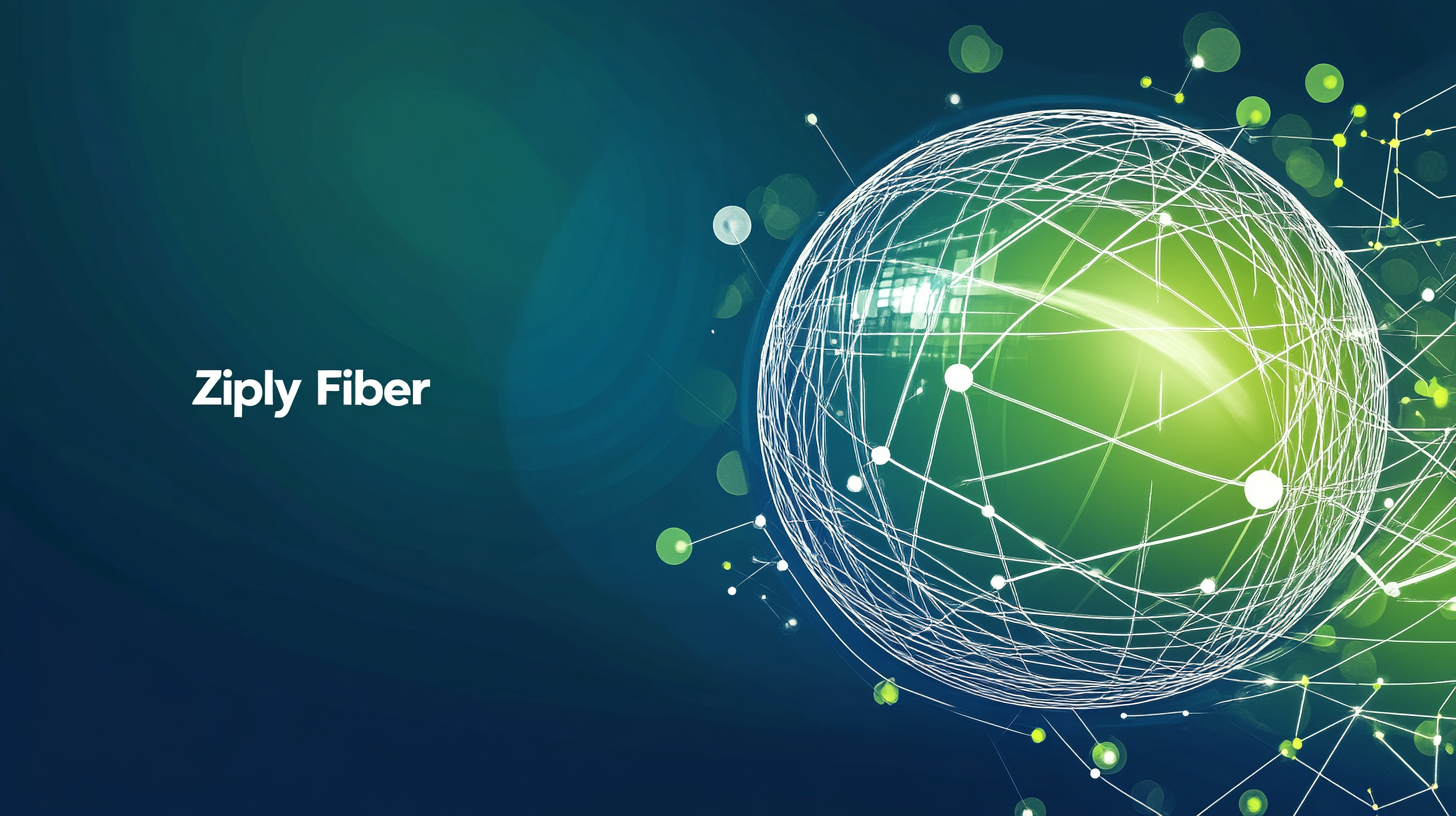Exploring Ziply Fiber: Services, Plans, and Customer Reviews
Thu Sep 12 2024
|netservicesDiscover everything about Ziply Fiber, from their service plans and pricing to customer reviews and availability. Learn why Ziply Fiber might be your next internet provider.

Ziply Fiber is a relatively new player in the internet service provider (ISP) market, but it’s quickly making waves with its high-speed fiber-optic internet services. Founded in 2020, Ziply Fiber took over Frontier Communications’ operations in the Northwest United States, including parts of Washington, Oregon, Idaho, and Montana.
The company’s primary focus is on delivering fast, reliable internet connections through fiber-optic technology. Fiber internet is known for its superior speed and reliability compared to traditional copper-based services like DSL or cable. Ziply Fiber has been actively expanding its network, bringing fiber internet to many areas that previously had limited options for high-speed connectivity.
What sets Ziply Fiber apart is its commitment to expanding fiber access in both urban and rural areas. This approach has made it a popular choice for customers looking for faster internet speeds and better service in regions where such options were previously limited.
Ziply Fiber Internet Plans and Pricing
Ziply Fiber offers a range of internet plans to suit different needs and budgets. Their fiber-optic plans are particularly noteworthy for their competitive pricing and impressive speeds. Here’s a breakdown of their main offerings:
1. Fiber 100/100: This entry-level plan offers 100 Mbps download and upload speeds for $20 per month.
2. Fiber 300/300: For $40 per month, customers get 300 Mbps symmetrical speeds.
3. Fiber Gig: This popular plan provides 1 Gbps (1000 Mbps) speeds for $60 per month.
4. Fiber 2 Gig: At $70 per month, this plan offers blazing fast 2 Gbps speeds.
5. Fiber 5 Gig: For $80 per month, customers can enjoy an impressive 5 Gbps connection.
It’s worth noting that these prices are introductory rates and may increase after the first year. However, even at regular pricing, Ziply Fiber’s plans remain competitive in the market.
In areas where fiber isn’t yet available, Ziply also offers DSL internet plans. These plans are generally slower and less reliable than fiber, but they provide an option for customers in areas still waiting for fiber rollout.
Ziply Fiber Availability and Coverage
Ziply Fiber’s service area primarily covers parts of four Northwestern states: Washington, Oregon, Idaho, and Montana. The company has been aggressively expanding its fiber network since its inception, focusing on both urban and rural areas.
As of now, Ziply Fiber’s coverage is most extensive in Washington and Oregon, with growing presence in Idaho and Montana. Major cities served include Seattle, Portland, and Boise, but the company also reaches many smaller towns and rural communities.
To check if Ziply Fiber is available in your area, you can visit their website https://ziplyfiber.com/ and enter your address. Keep in mind that even if fiber isn’t currently available at your location, Ziply might have plans to expand to your area in the future.
It’s important to note that Ziply Fiber’s expansion efforts are ongoing. The company has committed to bringing fiber internet to many communities that previously had limited high-speed internet options. This focus on expanding to underserved areas has made Ziply Fiber a welcome addition to the ISP landscape in the Northwest.
Customer Reviews and Satisfaction
Customer reviews for Ziply Fiber have been generally positive, especially when compared to many other internet service providers. According to various online review platforms, Ziply Fiber often receives praise for its fast speeds, reliable service, and competitive pricing.
Many customers appreciate the symmetrical upload and download speeds offered by Ziply’s fiber plans. This feature is particularly beneficial for those who work from home, engage in online gaming, or frequently upload large files.
Another aspect that garners positive feedback is Ziply Fiber’s customer service. Many users report helpful and responsive support, which is not always the case with larger, national ISPs. The company’s local focus seems to translate into more personalized customer care.
However, like any service provider, Ziply Fiber isn’t without its criticisms. Some customers have reported issues with installation delays or initial service setup problems. It’s worth noting that many of these issues seem to stem from the company’s rapid expansion and the challenges of rolling out new infrastructure.
Overall, the sentiment towards Ziply Fiber appears to be largely positive, with many customers expressing satisfaction with the service quality and value for money.
How Ziply Fiber Compares to Competitors
When comparing Ziply Fiber to other internet service providers, several factors stand out. First and foremost is the company’s focus on fiber-optic technology. This gives Ziply an edge over many cable and DSL providers in terms of speed and reliability.
Compared to major cable providers like Xfinity or Spectrum, Ziply Fiber often offers faster upload speeds at similar or lower prices. For example, while a cable provider might offer 1 Gbps download speeds with only 35 Mbps upload, Ziply’s Gig plan provides symmetrical 1 Gbps upload and download speeds.
When it comes to other fiber providers like CenturyLink or AT&T Fiber, Ziply’s plans are competitively priced. In some cases, Ziply offers higher speeds at lower prices than these national providers.
One area where Ziply Fiber stands out is its lack of data caps and contracts on fiber plans. Many competitors impose data limits or require long-term commitments, while Ziply offers more flexibility.
However, it’s important to note that Ziply’s availability is limited compared to national providers. While this is changing as the company expands, it means that Ziply isn’t an option for many consumers outside of its current service area.
Ziply Fiber Installation Process
The installation process for Ziply Fiber typically involves a few key steps. First, customers need to check availability and sign up for a plan on the Ziply Fiber website. Once an order is placed, Ziply will schedule a professional installation appointment.
On the day of installation, a Ziply technician will run a fiber-optic line from the nearest access point to your home. This may involve some digging or drilling, depending on your property layout. The technician will then install the necessary equipment inside your home, including the Optical Network Terminal (ONT) and router.
Many customers report that the installation process is smooth and professional. Technicians are generally knowledgeable and take the time to explain the setup and answer any questions.
However, some customers have experienced delays in getting their service installed, particularly in areas where Ziply is still building out its network. It’s a good idea to ask for an estimated timeline when you sign up for service.
Ziply Fiber Equipment and Fees
Ziply Fiber provides the necessary equipment for their service, including a modem/router combo device. As of the last update, Ziply charges a $10 monthly fee for equipment rental. This fee is fairly standard in the industry, though some providers charge more.
For customers who prefer to use their own equipment, Ziply Fiber does allow this option. However, it’s important to ensure that your equipment is compatible with fiber-optic internet and can handle the speeds of your chosen plan.
Ziply Fiber generally doesn’t charge installation fees for new customers, which is a nice perk. However, it’s always a good idea to confirm this when signing up, as promotions and policies can change.
One notable aspect of Ziply Fiber’s pricing structure is the lack of hidden fees. Many customers appreciate the straightforward billing, without the surprise charges that are common with some other providers.
Understanding Ziply Fiber’s Speed and Performance
Ziply Fiber’s internet speeds are one of its main selling points. With plans ranging from 100 Mbps to a whopping 5 Gbps, Ziply offers some of the fastest residential internet speeds available in the United States.
The fiber-optic technology used by Ziply provides several advantages in terms of speed and performance. First, fiber offers symmetrical speeds, meaning the upload speed is the same as the download speed. This is particularly beneficial for activities like video conferencing, online gaming, and uploading large files.
Fiber-optic internet is also known for its reliability. It’s less susceptible to interference from weather conditions or electromagnetic signals compared to cable or DSL. This results in more consistent performance and fewer outages.
Many Ziply Fiber customers report that they consistently get speeds close to or matching their plan’s advertised speeds. This is not always the case with other types of internet connections, where actual speeds can often fall short of advertised speeds.
Ziply Fiber’s Data Caps and Contracts
One of the most customer-friendly aspects of Ziply Fiber’s service is the absence of data caps and contracts on their fiber plans. This means customers can use as much data as they want without worrying about overage charges or throttling.
The lack of contracts is also a significant benefit. Customers aren’t locked into long-term commitments and can change or cancel their service without hefty early termination fees. This flexibility is particularly appealing to renters or those who may need to move in the near future.
It’s worth noting that Ziply’s DSL plans may have different terms, potentially including data caps or contracts. Always check the specific terms of your plan when signing up.
This no-cap, no-contract approach sets Ziply Fiber apart from many competitors who often impose data limits or require long-term commitments. It’s a policy that aligns well with the increasing data demands of modern households, where streaming, gaming, and working from home have become commonplace.
Pros and Cons of Ziply Fiber
Like any service, Ziply Fiber has its strengths and weaknesses. Here’s a balanced look at the pros and cons:
Pros:
– Fast, symmetrical speeds
– Competitive pricing
– No data caps or contracts on fiber plans
– Expanding coverage to underserved areas
– Generally positive customer service reviews
Cons:
– Limited availability compared to national providers
– Potential for installation delays in new service areas
– DSL options may not be as competitive as fiber plans
– Introductory rates increase after the first year
Overall, for those in its service area, Ziply Fiber offers a compelling internet option, particularly for customers who can access their fiber plans.
Ziply Fiber Customer Service and Support
Customer service is an area where Ziply Fiber seems to shine compared to many larger ISPs. The company offers several support channels, including phone support, online chat, and email.
Many customers report positive experiences with Ziply’s support team, noting their helpfulness and knowledge. The company’s local focus appears to contribute to more personalized service compared to some national providers.
Ziply Fiber also provides a range of online resources, including troubleshooting guides and FAQs, on their website. This self-help option can be convenient for customers who prefer to solve issues on their own.
However, as with any rapidly growing company, there have been some reports of longer wait times during peak periods or in newly serviced areas. Despite this, the overall sentiment towards Ziply’s customer service remains largely positive.
How to Sign Up for Ziply Fiber
Signing up for Ziply Fiber is a straightforward process. Here’s a step-by-step guide:
1. Visit the Ziply Fiber website at https://ziplyfiber.com/.
2. Enter your address to check service availability in your area.
3. If service is available, you’ll see a list of plans to choose from. Select the plan that best fits your needs.
4. Provide your personal information and choose an installation date.
5. Review your order and confirm.
After your order is placed, Ziply will contact you to confirm your installation appointment. Remember to ask any questions you might have about the installation process or your chosen plan during this time.
For those in areas where Ziply Fiber is expanding, you can often sign up for updates to be notified when service becomes available in your neighborhood.
In conclusion, Ziply Fiber offers an attractive option for internet service in the Northwest United States, particularly for those who can access their fiber plans. With fast speeds, competitive pricing, and customer-friendly policies, Ziply Fiber is certainly worth considering for anyone in their service area looking for reliable, high-speed internet.



